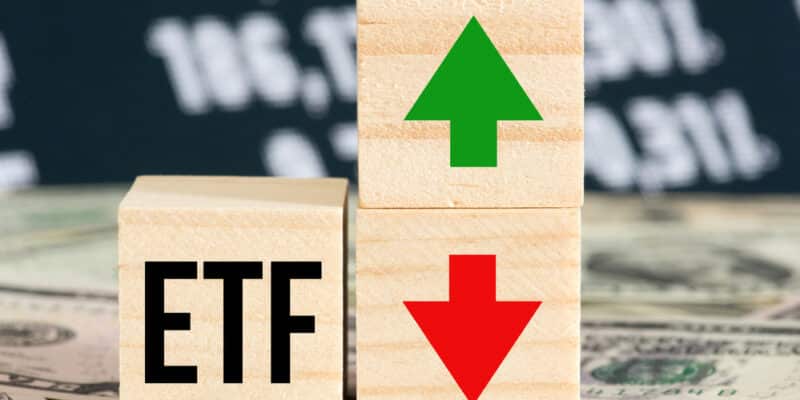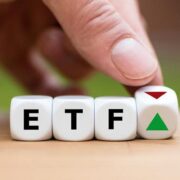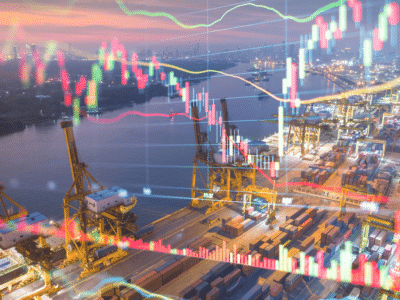Exchange-traded funds are popular investment instruments for both experienced and beginner investors. This is primarily due to their low cost and the diversification they offer to investors. However, there are risks associated with ETF investing noteworthy to investors before immersing themselves in the ETF market.
What risks are associated with ETFs?
ETFs are a significant investment combining the best of both worlds, structured like mutual funds but operate and trade like stocks. As a result, it doesn’t exclude funds from risks but minimizes them.
Critical risks ETF investors face include:
- Trading risk
- Market risk
- Compositional risk
- Risk of liquidity
- Tax risk
Trading risk
One of the advantages of ETF funds over mutual funds is their tradability. The risk in being able to trade ETFs like stocks is in over-trading. By design, exchange-traded funds are investment instruments rather than trading instruments. Trading ETFs like stocks lures many investors from pure investment to ETF active trading, attempting to forecast the next significant market movement.
The forex trading market success rate stands at 5%. Therefore, by the exact statistics, active ETF trading is bound to fail 95% of the time. Concurrently, ETFs are low-cost investment options, and dynamic trading results in higher costs; for every trade placed, there are commissions to be paid.
Active trading of ETFs, therefore, increases the associated ETF cost and increases the investment risk. To ensure consistent returns from ETFs and mitigate against trading risk-stick to index ETF investing and avoid active trading.
Risk of liquidity
The hallmark of a robust investment instrument is its liquidity. Liquidity refers to the ability to convert or close a position quickly, presence of ready buyers and sellers in the market at any given time. Although ETF liquidity is dependent on the fund asset base and trading volumes, the most popular and largest ETFs have no liquidity challenge.
Suppose the market interest in an ETF is low. Closing out this position becomes problematic. Investors analyze the market and flag any ETFs with huge spreads to avoid such scenarios, the difference between the ask and bid price. Wide spreads signal investment assets with low liquidity. Make sure that ETFs bought are highly liquid, facilitating early exits hence investment protection in turbulent markets.
Market risk
Market risk refers to the probability of an investment instrument incurring losses due to factors affecting the financial markets at large. Market risk arises due to geopolitical factors, interest rates, exchange rates, and economic factors such as inflation and recession. For all these factors, the price of an investment instrument is affected.
The price change deviation exhibited by investment assets is its volatility. The volatility of an ETF determines how attractive the fund is in the market. Highly volatile ETFs have lower demand than more consistent and stable funds.
Any market risk affecting a single component of an ETF fund impacts the general fund, dependent on its weighting in the fund. For example, a change in the Canadian currency exchange rate affects the value of Canadian stock and the overall value of an ETF fund with such stock in its portfolio.
The only way to mitigate market risk is through hedging for all investment assets. Hedging strategy involves having a counter position or investment to offset any losses incurred due to unsystematic, market, risk factors. ETFs with no single holding having a heavy weighting is another market risk mitigation strategy. Invest in ETFs with a large holding base, ones with evenly distributed weightings, and cutting across several industries in the economy.
Compositional risk
ETF funds comprise a basket of investments. As a result, many investors are interested in ETF funds as a diversification strategy to reduce investment risk and ensure consistent returns. Despite this, different ETFs tracking the same index perform. The difference is due to various compositional holdings.
The assumption that ETF funds tracking the same index have uniformity in performance is incorrect. The performance of a particular ETF is dependent on the securities line-up of the ETF and their relative weightings.
Investors avoid compositional risk by looking at the underlying ETF holdings and ensuring that ETFs chose and the expected return match.
Tax risk
The blanket consensus that all ETFs have tax benefits is a fallacy. Different funds are taxed differently. For example, exchange-traded funds exposed to exchange rates, the commodity market, or those with capital gain on returns are taxed differently from the other funds.
Fund managers mitigate against tax risk by utilizing in-kind transactions; capital gain distribution attracts payments and taxes. Therefore, ETFs are not all created equal, and it behooves investors to familiarize themselves with ETF fund taxation law to enjoy the taxation benefits coupled with fund investing in full.
What happens if the ETF manager crashes?
Transferring money to an ETF manager to see that manager go bottom is one of the most common problems investors fear to face.
What will happen to the money?
The bottom line is that this money is protected. ETFs are legally separate from their issuers. ETF investments are held in a depository so that the investors’ assets will be safe in the bankruptcy of the issuing management company. If the issuer goes bankrupt, the custodian can liquidate the ETF and distribute the funds to investors.
Summary
ETFs are relatively low-risk investments compared to both stocks and bonds. They are also relatively cheaper to invest in; the commissions and expense ratios are much lower than other asset classes. In addition, ETF composition facilitates portfolio diversification at a fraction of the cost without having to own individual investment instruments.
All these advantages have driven the recent popularity of ETF investing. For this reason, investors have to take part in the market with both eyes peeled for the ETF risks herein discussed and put in place mitigating strategies to ensure continued ETF returns.















Comments